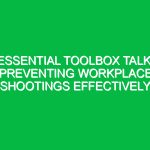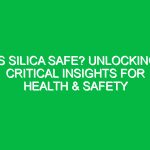Introduction
The question of whether it is bad to live near power lines has been a point of contention and concern for many individuals and communities, particularly within the Health, Safety, and Environment (HSE) domain. As urban areas expand and infrastructure development continues, the proximity of residential areas to high-voltage power lines often raises questions about potential health risks and Safety issues. Understanding the implications of living near power lines is crucial for making informed decisions about housing and community planning. This article aims to delve into the complexities of this issue, exploring the health impacts, safety considerations, environmental factors, and relevant Regulations surrounding living close to power lines.
Understanding Power Lines
Before addressing the health implications, it’s essential to understand what power lines are and their purpose. Power lines are electrical cables that transport electricity from power plants to consumers. They come in various forms, including transmission lines, which are high-voltage lines that carry electricity over long distances, and distribution lines, which deliver electricity to homes and businesses. The presence of power lines in residential areas can often be a source of concern due to their visual impact and perceived risks.
Health Concerns Associated with Living Near Power Lines
The primary health concern associated with living near power lines revolves around electromagnetic fields (EMFs). EMFs are invisible areas of energy that are produced by electricity. While EMFs are present everywhere electricity is used, they are often stronger near power lines. The debate regarding the potential health Effects of EMFs has persisted for decades, with various studies yielding conflicting results.
Electromagnetic Fields (EMFs) and Health
Research on the health effects of EMFs primarily focuses on two areas: cancer risk and non-cancer health effects. Here’s a closer look at each:
- Cancer Risk: Numerous studies have investigated the possible link between EMF exposure and cancer, particularly childhood leukemia. The World Health Organization (WHO) has classified EMFs as possibly carcinogenic to humans, based on limited evidence from human studies and sufficient evidence from animal studies. However, the scientific community remains divided, with many studies failing to find a conclusive causal relationship.
- Non-Cancer Health Effects: Some individuals report various non-cancer health symptoms, often referred to as electromagnetic hypersensitivity (EHS). Symptoms may include headaches, fatigue, and sleep disturbances. However, clinical studies have not consistently supported the existence of EHS as a recognized medical diagnosis.
Real-Life Examples and Anecdotes
Consider the case of a family living near a high-voltage power line in a suburban neighborhood. Over the years, the parents noticed that their children experienced frequent headaches, and their sleep quality seemed compromised. After researching the potential effects of living near power lines, they decided to consult medical professionals and environmental health experts. While their experience highlighted their concerns, it is essential to note that individual cases can differ widely, and broad conclusions cannot always be drawn.
Safety Considerations
In addition to health risks, there are Safety considerations associated with living near power lines. These safety issues can range from the risk of electrical accidents to the structural integrity of the power lines themselves.
Electrical Hazards
The most apparent safety concern is the risk of electrical Hazards. Power lines carry high voltages, and accidental contact can lead to severe injuries or fatalities. Therefore, maintaining a safe distance from these lines is crucial. Many utility companies implement buffer zones around power lines to help mitigate this risk. Homeowners should be aware of these zones and consider them when choosing a residence.
Environmental Factors
The presence of power lines can also have environmental implications. For instance, the construction and Maintenance of power lines can disrupt local ecosystems. Additionally, in certain areas, power lines can create aesthetic concerns that may affect property values and community satisfaction.
Regulations and Standards Governing Power Lines
Various regulations govern the installation and maintenance of power lines, primarily aimed at ensuring Public Safety and minimizing health risks. These regulations may differ from one jurisdiction to another but generally include:
- National Electrical Safety Code (NESC): This code establishes safety standards for the installation, operation, and maintenance of electric power and communication lines. Compliance with NESC helps ensure that power lines are installed at safe distances from homes and public areas.
- Occupational Safety and Health Administration (OSHA): osha sets safety standards to protect workers involved in the construction and maintenance of power lines. These regulations ensure that workers are safeguarded from electrical Hazards.
- Local Zoning Laws: Many municipalities have zoning laws that dictate how close structures can be built to power lines. These laws aim to protect residents from potential hazards associated with proximity to high-voltage infrastructure.
Best Practices for Homebuyers and Residents
If you are contemplating living near power lines, consider the following Best Practices to make an informed decision:
- Research Local Regulations: Familiarize yourself with local zoning laws and regulations regarding power lines. Understanding these rules can help you assess the safety and health implications of a property.
- Consult Health Experts: If you have health concerns related to living near power lines, consult with healthcare professionals or environmental health specialists. They can provide insights based on the latest research and your specific situation.
- Evaluate Property Values: Investigate how the proximity to power lines may affect property values. Some buyers may be deterred by nearby lines, which could impact resale value.
- Consider Distance: If possible, choose a home that is located at a safe distance from power lines. The further away you are, the lower your potential exposure to EMFs.
Conclusion
In summary, the question of whether it is bad to live near power lines encompasses various health, safety, and environmental considerations. While some studies suggest potential health risks associated with EMF exposure, the evidence remains inconclusive, and individual experiences can vary widely. Safety concerns related to electrical hazards and environmental impacts further complicate the issue.
When making housing decisions, it is essential to weigh these factors carefully. By staying informed about regulations, consulting experts, and considering personal health and safety, individuals can make educated choices regarding living near power lines. Ultimately, promoting health, safety, and environmental Sustainability is paramount, and ongoing research will continue to shape our understanding of this complex issue.


